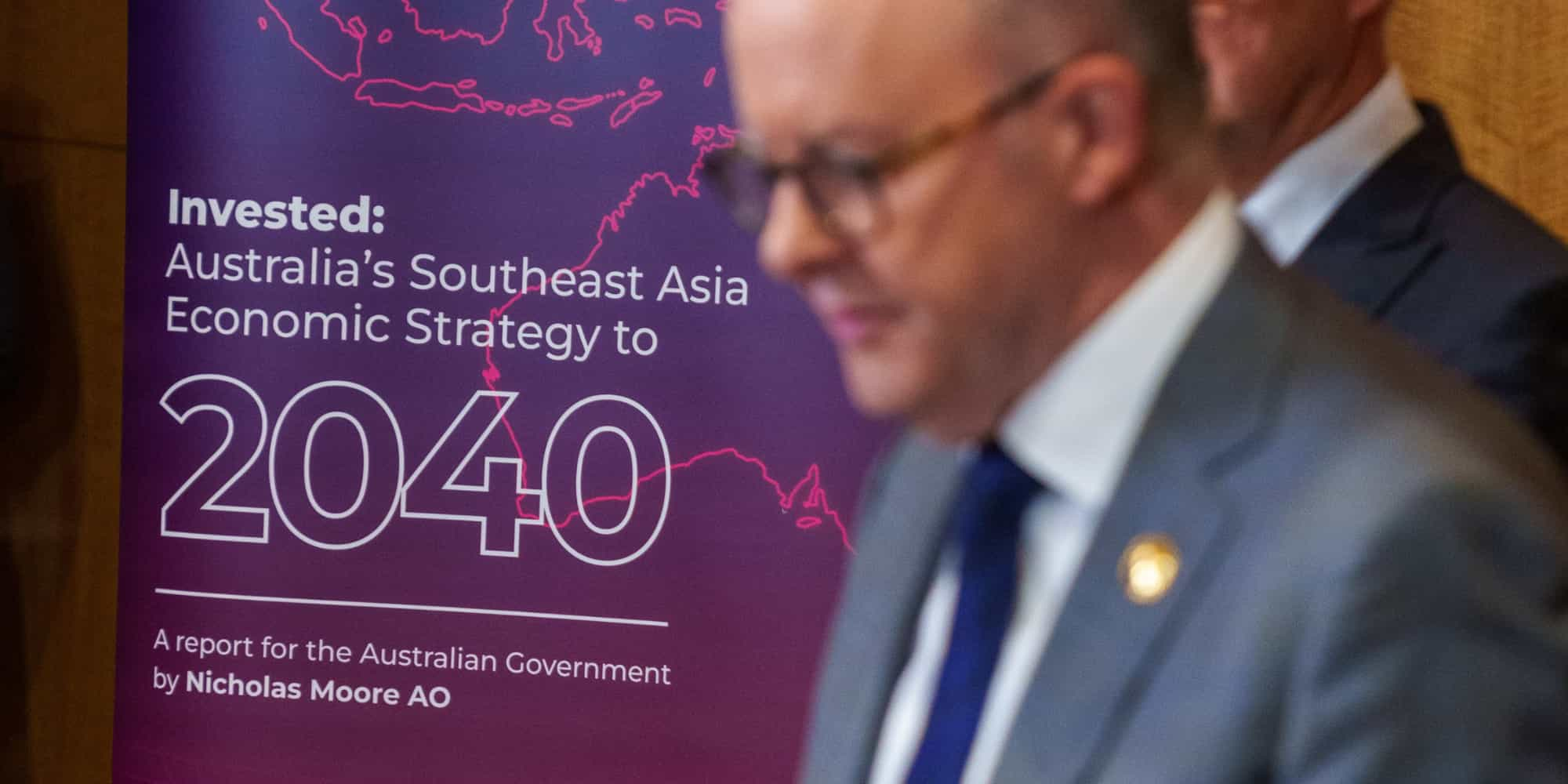Southeast Asia strategy needs funding and commitment
Australia’s planned economic strategy for Southeast Asia will require significant funding, bipartisan political commitment, and good oversight if it is to succeed, writes Brenton Mauriello AM.
27 October 2023

During the East Asia Summit in Jakarta last month, Prime Minister Anthony Albanese launched Australia's Southeast Asia Economic Strategy 2040. This plan was ably put together by Nicholas Moore AO, a successful financier with deep knowledge of international and regional financial markets. His engagement with business and community was extensive, giving rise to clear and concise recommendations.
It is commendable that the Albanese government, despite the pressures of home, have provided renewed focus on Australia's orientation towards its near neighbours in ASEAN.
The 2040 Moore plan represents a good first step in a multi-year process where Australia seeks to strengthen its relationships with ASEAN at a government, business and civil level.
Yet while the recommendations are clear, and at face value make sense to those who have been active in the region, they perhaps understandably come without detail about how they are to be implemented and how the desired outcomes are to be achieved.
As someone who has seen the ebb and flow of Australia's engagement with the region, I believe there is a need to ensure that engagement comes with clarity, consistency, and continuity. Australia has periodically focused on its relationship with ASEAN and made several attempts to engage and re-engage.
But the messaging is mixed, and our attention and commitment seem to waver with each change in the political landscape. Business is at fault here too, lacking strategic focus and often adopting short termism instead of long-term ASEAN-based businesses that appreciate the risks and the opportunities.
Certainly, our overt and in some ways unbalanced concentration on China has come home to roost. Is ASEAN the answer to our need as a nation to find new trade and investment opportunities?
ASEAN is not China. But as Moore’s report stated ASEAN offers enormous potential – on track to be the fourth biggest global economy by 2040, home to a potential consumer market 10 times bigger than Australia. There also is a geopolitical rationale. Diversification is 'critical' for Australia’s economic resilience because over-reliance on a few markets poses 'long-term structural risks' for both individual businesses and the economy.
Will the 2040 Strategy provide the impetus needed? And more importantly, is our business community ready and knowledgeable enough about the region and its diverse constituent countries to make the change?
Despite its title, the Moore report is not a strategy - yet. The strategy will emerge when an implementation plan is drawn up and resources are allocated that are equal to the scale of Moore’s recommendations and objectives.
It will cost a lot of money and require dedication in government from ministers down to officials. It will require a closer partnership between government and business than we have seen in the past. And it will require foresight and imagination from the business community itself in building Asia capability.
Both government and business should see the creation of Asia capability and engagement infrastructure as an investment, not an expense, no less significant or necessary than building physical infrastructure, like renewable power plants.
A key issue is the mechanisms that will be used to implement the multitude of recommendations in the Moore report, and how progress and spending will be monitored and justified, allowing inevitable adjustments to be made along the way. If we are truly in this for the long term, the government should consider an independent body, with a balanced representation from government, business and society, to oversee and implement the strategy over the next 16 years.
This body could have specific powers and report to the Australian parliament and people as to its activities and progress in expanding trade and investment with ASEAN.
Such an oversight body could provide some insulation from political winds of change, reinforce the consistency of commitment and implementation, and possibly better bring together the multitude of organisations needed to engage the region as one Australia.
A key factor in success will be our ability to develop a cohesive approach that combines the Australian government, business, and civil society in the region.
An example of an initiative already launched without government assistance is the Advance Australia Council in Thailand, which seeks to bring together existing Australian-Thai organisations under one banner, one 'Brand Australia'. The Advance Australia Council doesn't seek to replace or diminish the existing organisations' efforts, rather it seeks to improve collaboration, provide additional funding, establish a support mechanism, increase local visibility, and provide outreach to the Thai community.
This is something along the lines of the British Council, the Goethe Institute, the American Alumni Association and the Alliance Francaise, all of which are active in situ organisations, building relationships in every ASEAN country. An Australian promotional institution along those lines is long overdue and ASEAN is a good place to start.
'Invested: Australia’s Southeast Asia Economic Strategy to 2040' is a great first step and I commend the government and Nicholas Moore for their efforts. It is a robust document that provides clarity and some excitement about the region that has been lacking. However, the hard work starts from here.
Next year marks 50 years since Australia became ASEAN’s first dialogue partner. But over the past five decades, Australia has failed to engage ASEAN as well as it should. This is particularly so for Australian business. We have a responsibility to uplift our engagement; it is in our interests to do so.
Brenton Mauriello AM is Treasurer, AustCham ASEAN.
How can we help? Get in touch to discuss how we can help you engage with Asia
